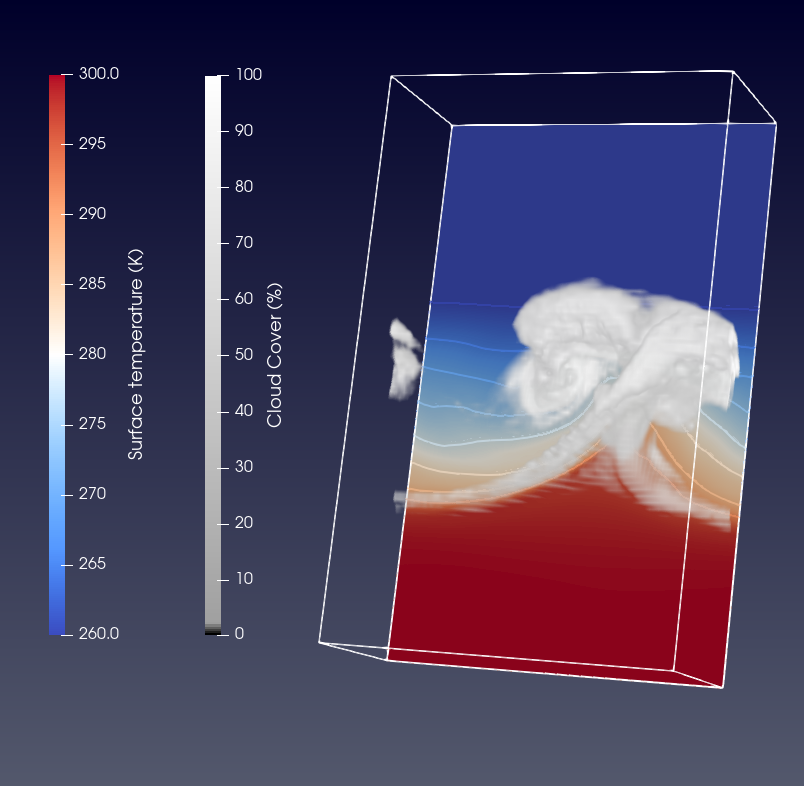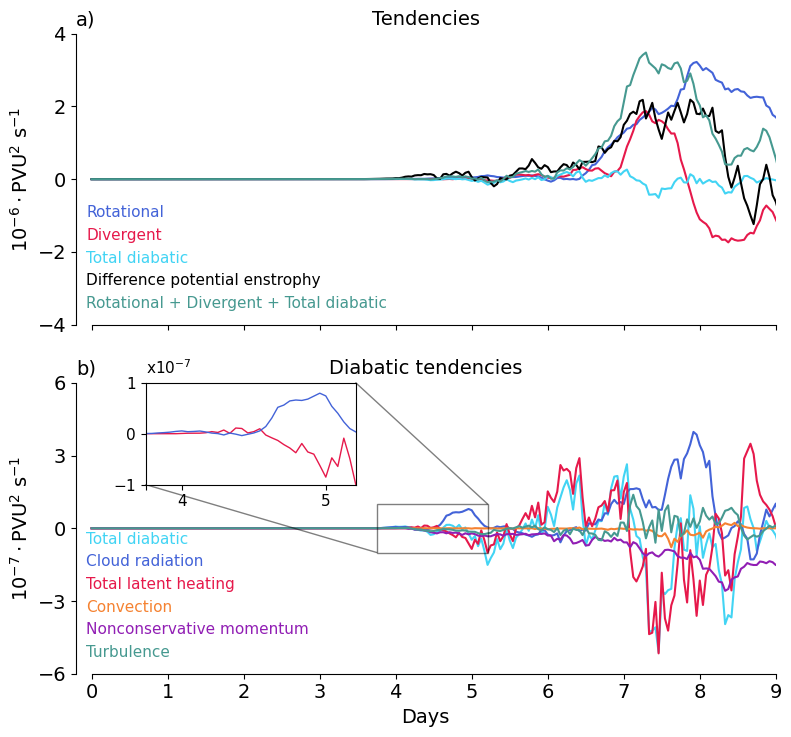Interaction between clouds and radiation affects extratropical cyclones
The weather in midlatitudes is strongly determined by low-pressure systems or cyclones whose dynamics and predictability are strongly influenced by clouds. Clouds can affect cyclones by latent heat release during their formation when water vapor condenses. Also, clouds can affect cyclones by absorbing and emitting solar and thermal radiation, which leads to further heating and cooling in the atmosphere. Although the impact of latent heating on cyclones is much studied, little is known about the impact of cloud-radiative heating and cooling (CRH) on cyclones.

In a recent collaborative work, Keshtgar et al., 2022 provide the first systematic investigation of CRH impact on an idealized cyclone. To this end, a new modeling setup was implemented in the ICON atmosphere model which enables to simulate idealized cyclones on a Cartesian plane channel geometry. In addition, a new modeling technique was introduced that allows to simulate a cyclone with only the radiative contribution from clouds which isolates the impact of CRH in a clean and easy-to-interpret manner.To assess the impact of CRH on the cyclone, the researchers compared cyclones simulated with and without CRH. Results showed that CRH has a substantial strengthening impact on the cyclone’s eddy kinetic energy near the tropopause. To understand how CRH changes the dynamics of the cyclone, the researchers investigated the source of differences in the potential vorticity near the tropopause. Results showed that the CRH impact on the cyclone follows a sequence of processes: cloud radiative cooling near the cloud top and modest warming below, destabilize the ascent region within the cyclone and change the amount of latent heating. Changes in the latent heating lead to changes in the vertical motion and the divergent flow near the tropopause. Following changes in the divergent flow, differences in potential vorticity amplify with the rotational flow during the highly nonlinear stage of the cyclone evolution. Although CRH is comparably small in magnitude, it can affect extratropical cyclones by changing latent heating and subsequently the large-scale flow near the tropopause. Another important finding of this research is that the CRH impact on the cyclone gets stronger over time because of the continuous interaction of CRH with the cyclone. The researchers elaborate that “this finding indicates that changes in the latent heating may differ with different representations of CRH in models. In fact, it is long known that CRH is uncertain in models due to different factors such as inherent problems of approximations applied in the radiation schemes, and the poor representation of clouds. Thus, the uncertainties associated with the representation of CRH in numerical models may influence model predictions of extratropical cyclones.”

Currently, the IMK-TRO PhD student Behrooz Keshtgar and colleagues from the University of Vienna and LMU are working on quantifying CRH uncertainties within an idealized extratropical cyclone and investigating their impact on the dynamics of the cyclone. Their plan is to put the idealized cyclone simulations into perspective by testing to what extent the idealized results hold for a realistic weather situation by simulating one of the cyclones observed during the NAWDEX field campaign.
Reference:
Keshtgar, B., Voigt, A., Hoose, C., Riemer, M., and Mayer, B.: Cloud-radiative impact on the dynamics and predictability of an idealized extratropical cyclone, Weather Clim. Dynam. Discuss. https://doi.org/10.5194/wcd-2022-35, in review, 2022.
